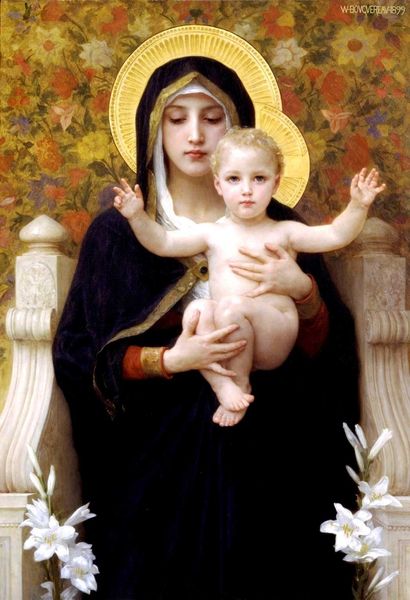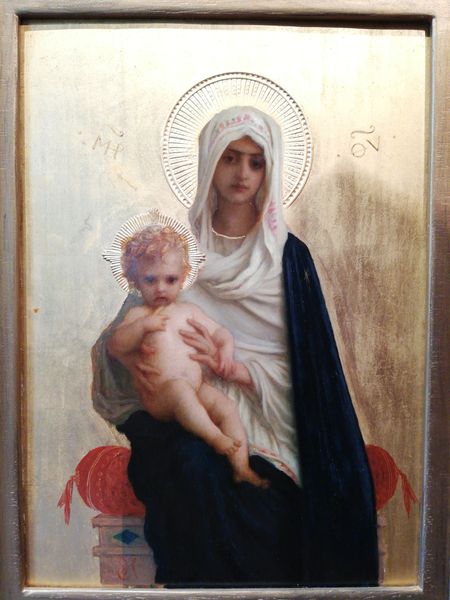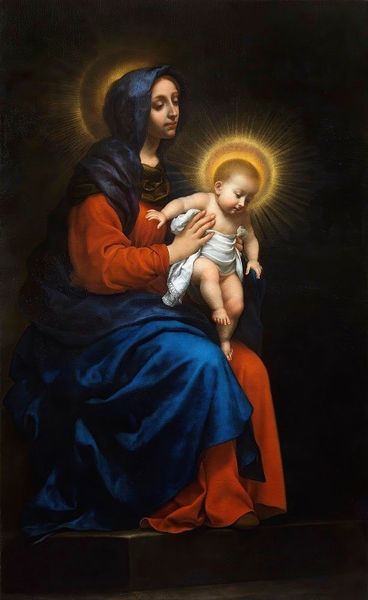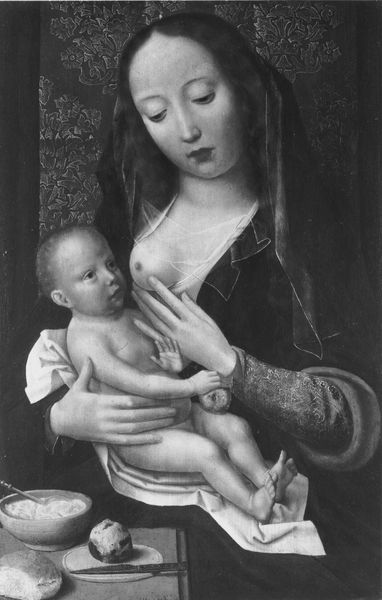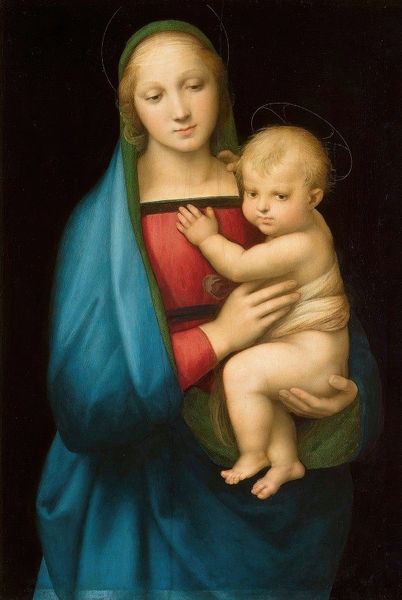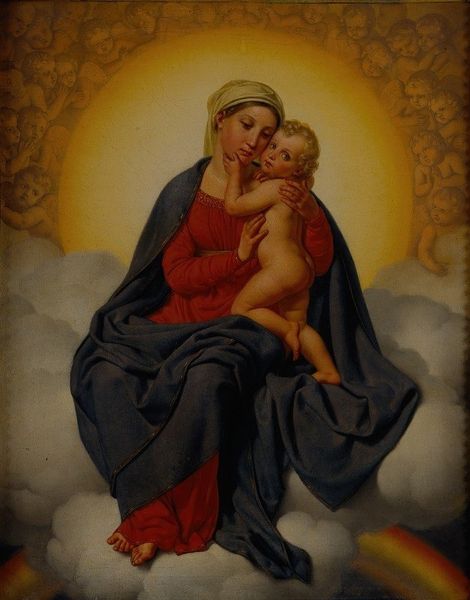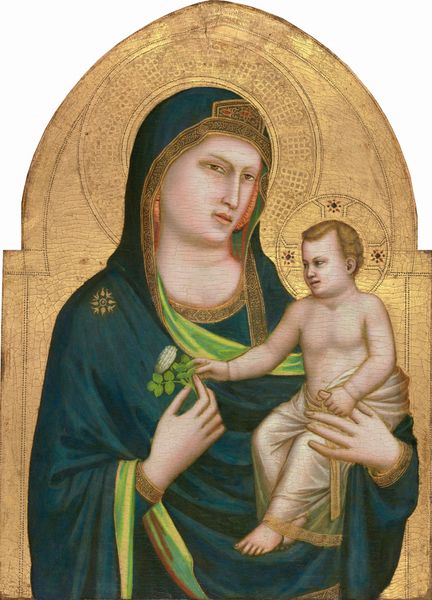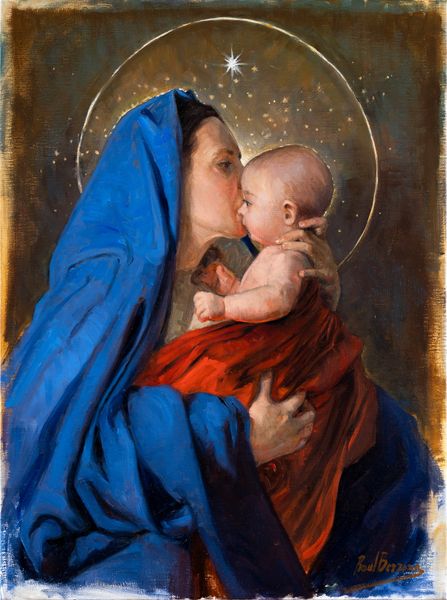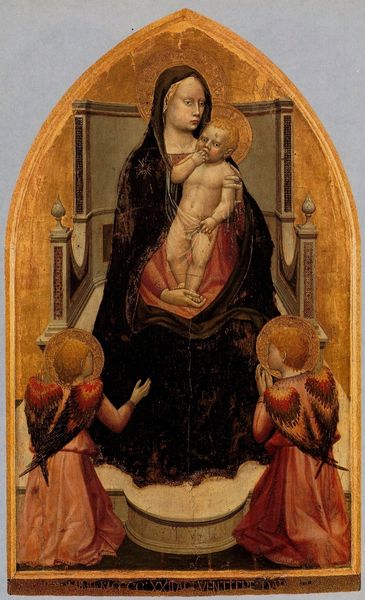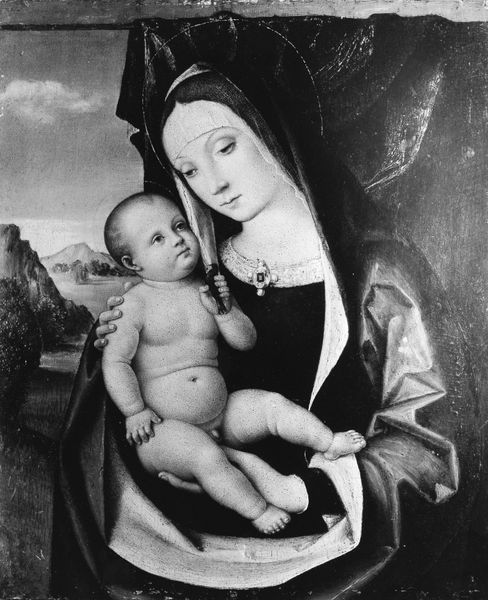
Copyright: Public Domain: Artvee
Curator: This painting, executed in 1888 by William Bouguereau, presents us with a classic depiction of the Virgin and Child in oil. The academic precision is striking from across the gallery. Editor: Immediately, I'm struck by the contrasting emotions conveyed here. There’s an air of almost somber detachment on Mary’s face, juxtaposed with the child’s innocent openness, emphasized by his outstretched arms. Curator: Absolutely. Bouguereau was, if nothing else, a master of manipulating the canon of art history. The work draws heavily from Renaissance Madonnas, filtered through a 19th-century academic lens. It catered to a conservative, bourgeois audience craving accessible, morally uplifting images. Editor: Yet it’s interesting to consider that this piece emerges from a socio-political context that saw many questioning traditional patriarchal structures. How do we reconcile this tender portrayal with the broader feminist movements occurring at the time? It almost feels…anachronistic. Curator: Indeed. The idealized depiction of motherhood served as a bulwark against evolving societal norms. These types of images upheld conservative family values and presented women primarily as mothers, pushing back against burgeoning female empowerment. It wasn't about lived experience, it was about reinforcing a social ideal. Editor: It's interesting how the painting's perfection feels complicit. The almost flawless rendering of skin tones, the carefully arranged drapery…it creates a veneer of truth, yet reinforces a patriarchal fantasy. There is beauty and masterful technique, but beauty in service to a social role. Curator: Precisely. It represents the complicated legacy of academic art: incredibly skilled artists adhering to traditional conventions, often reflecting the dominant ideology of their era. We can admire Bouguereau's skill, but we need to also see it as an artefact deeply enmeshed in social constructs and political forces of the late 19th century. Editor: Understanding the historical context really pushes us to think critically about not just the aesthetics, but about how art participates in wider dialogues around gender, identity, and power. This tender Madonna tells a richer, and potentially unsettling story, once we ask those deeper questions.
Comments
No comments
Be the first to comment and join the conversation on the ultimate creative platform.
